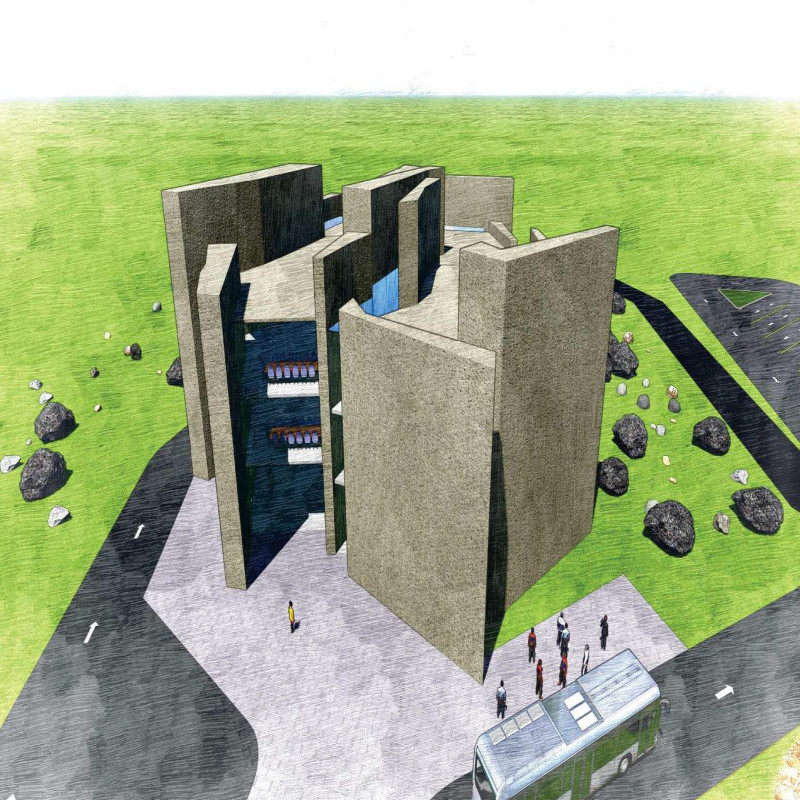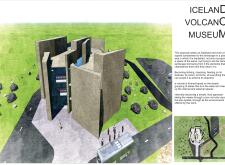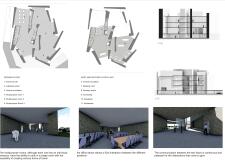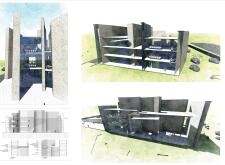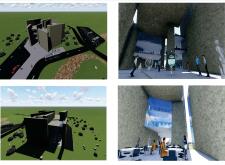5 key facts about this project
The Iceland Volcano Museum is designed to connect visitors with the unique environment of Iceland's volcanic landscape. The building focuses on integrating with its natural surroundings, serving as both a cultural space and an interactive exhibition venue. By reflecting the characteristics of the landscape, the museum invites visitors to experience the relationship between culture and nature.
Design Concept
The architectural design utilizes a volume formed by the arrangement of plates, which define both internal and external spaces. This setup allows visitors to engage with the museum in a way that reflects the dynamic qualities of the site. The internal layout encourages exploration, guiding individuals through a series of spaces that vary in experience and function.
Layout and Functionality
The museum is organized into distinct areas across two floors. On the ground floor, there is an entrance hall, a cafeteria, and several multipurpose rooms. Each room features its own entrance, enabling flexible usage for various events and activities. This arrangement strengthens the museum's role as a community space, catering to diverse visitor needs and experiences.
Vertical Circulation
Vertical circulation is thoughtfully incorporated to promote accessibility. The design ensures easy movement between levels, allowing people to traverse the building without barriers. The upper floors include additional facilities such as meeting rooms and co-working areas, which further enhance the museum's functionality and appeal.
Materiality
The materials chosen emphasize the connection to the landscape. Cast-in-place concrete is the primary material, providing structural strength and reflecting the textures of the surrounding area. Other materials used include welded wire reinforcing mesh and steel profile sheeting, both of which support the building's durability while maintaining visual harmony with its environment.
The design reflects a careful balance between architecture and its natural context. Features like large, open spaces combined with the material choices create a physical environment that celebrates Iceland's geological beauty while serving the community effectively.


